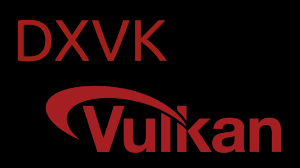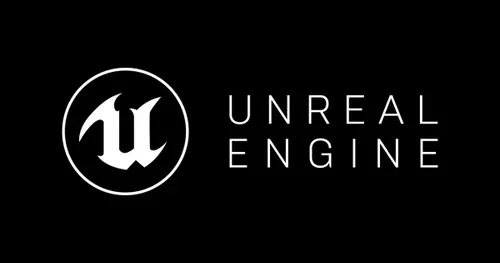Gamers constantly seek ways to boost performance, especially when running demanding titles on modest hardware. DXVK, a Vulkan-based translation layer, has emerged as a powerful tool to enhance frame rates (FPS) by converting DirectX calls to Vulkan, enabling smoother gameplay on Linux and Windows systems. Its ability to optimize graphics rendering makes it a game-changer for those struggling with lag or stuttering in resource-heavy games.
This open-source project, initially designed to improve gaming on Linux via Wine, has gained traction for its performance benefits across platforms. By leveraging Vulkan’s efficient API, DXVK reduces CPU overhead and maximizes GPU utilization, leading to significant FPS improvements. Whether you’re playing modern AAA titles or older DirectX-based games, DXVK can breathe new life into your gaming experience without requiring hardware upgrades.
Understanding how DXVK works and its impact on performance is key to unlocking its full potential. From minimizing bottlenecks to optimizing resource allocation, this article explores the mechanics behind DXVK’s ability to boost FPS. We’ll dive into its core functionalities, setup considerations, and practical benefits, offering insights for gamers looking to enhance their setup with this innovative tool.
What Is DXVK and How Does It Work?
Translating DirectX to Vulkan
DXVK translates DirectX 9, 10, and 11 API calls into Vulkan, a modern, low-level graphics API. This process allows games designed for DirectX to run on Vulkan-compatible hardware, reducing inefficiencies. By streamlining communication between the game and GPU, DXVK minimizes rendering delays. This translation is particularly effective on Linux systems using Wine, but it also benefits Windows users with compatible GPUs.
Reducing CPU Overhead
DirectX games often rely heavily on CPU resources, causing bottlenecks on weaker processors. DXVK shifts much of this workload to the GPU, which is better equipped for parallel processing. This reallocation reduces CPU strain, allowing for smoother frame delivery. Gamers with older CPUs or multi-core systems notice significant performance gains, as DXVK optimizes resource usage for modern hardware architectures.
Leveraging Vulkan’s Efficiency
Vulkan’s low-level design provides closer access to GPU hardware compared to DirectX. DXVK harnesses this efficiency to improve rendering speed and reduce latency. By optimizing draw calls and minimizing driver overhead, Vulkan ensures that the GPU processes graphics tasks faster. This results in higher FPS and more consistent performance, especially in graphically intensive games with complex scenes.
Why Does DXVK Boost FPS?
Optimized Resource Allocation
- DXVK prioritizes GPU usage, reducing CPU dependency for rendering tasks.
- It minimizes redundant API calls, streamlining data flow to the GPU.
- Vulkan’s multithreading support enhances performance on multi-core systems.
- Efficient memory management reduces stuttering and frame drops.
- This optimization ensures smoother gameplay, even on mid-range hardware.
Improved Draw Call Handling
DXVK enhances how games manage draw calls, which are instructions sent to the GPU for rendering objects. By batching and optimizing these calls, DXVK reduces processing time. This is critical in scenes with many objects, where high draw call volumes can choke performance. Faster draw call execution leads to higher FPS, especially in open-world or action-heavy games.
Lower Latency in Rendering
Vulkan’s design allows DXVK to reduce rendering latency compared to traditional DirectX pipelines. By minimizing the time between a frame’s computation and display, DXVK ensures smoother visuals. This low-latency approach is vital for fast-paced games requiring quick response times. Gamers experience less input lag, making gameplay feel more responsive and fluid.
Who Benefits Most from DXVK?
Linux Gamers Using Wine
DXVK is a cornerstone for Linux gamers running Windows games through Wine. It enables compatibility for DirectX titles while boosting performance. By translating DirectX to Vulkan, DXVK ensures these games run efficiently on Linux systems. Users with AMD or NVIDIA GPUs see the most significant FPS gains, as Vulkan is well-supported across these platforms.
Users with Older Hardware
Older CPUs often struggle with DirectX games due to high overhead. DXVK’s ability to offload tasks to the GPU makes it ideal for aging systems. Gamers with mid-range or older PCs can extend their hardware’s lifespan, running modern titles with improved FPS. This makes DXVK a cost-effective solution for budget-conscious players.
Enthusiasts Seeking Optimization
Performance enthusiasts tweaking their systems for maximum efficiency benefit from DXVK’s lightweight design. It allows fine-tuning of graphics settings to prioritize FPS over visual fidelity. By reducing bottlenecks, DXVK appeals to users who want every ounce of performance from their hardware. This is especially true for those running demanding games on modest setups.
How to Set Up DXVK for Maximum FPS
Installing DXVK Correctly
- Download the latest DXVK release from its official GitHub page.
- Extract the DLL files into your game’s directory or Wine prefix.
- Ensure Vulkan drivers are installed for your GPU (NVIDIA/AMD).
- Configure Wine to use DXVK via tools like Proton or Lutris.
- Test compatibility to confirm the game runs smoothly.
Configuring Graphics Settings
Adjusting in-game settings alongside DXVK enhances FPS gains. Lowering settings like shadows, anti-aliasing, or texture quality reduces GPU load. DXVK performs best when paired with optimized configurations tailored to your hardware. Tools like Lutris or Steam Proton simplify these adjustments, ensuring DXVK’s Vulkan translation maximizes performance without sacrificing too much visual quality.
Updating Drivers and Software
Keeping GPU drivers and DXVK updated is critical for optimal performance. Newer Vulkan drivers often include performance improvements that enhance DXVK’s efficiency. Regularly check for DXVK updates, as developers frequently optimize compatibility and speed. Pairing the latest drivers with current DXVK versions ensures you’re getting the best FPS possible from your setup.
Common Challenges and Solutions with DXVK
Compatibility Issues
- Some games may not fully support DXVK, causing crashes or glitches.
- Older DirectX 9 titles may require additional Wine tweaks.
- Check community forums for game-specific DXVK configurations.
- Use tools like ProtonDB to verify compatibility before installation.
- Update DXVK regularly to address known bugs.
Performance Variability
DXVK’s FPS gains depend on hardware and game optimization. Weak GPUs may struggle with Vulkan’s demands, limiting improvements. Testing different DXVK versions can help find the best match for your system. Adjusting Wine settings or switching to asynchronous shader compilation can also stabilize performance, ensuring consistent FPS across various titles.
Troubleshooting Errors
Installation errors or driver conflicts can hinder DXVK’s performance. Verify Vulkan support on your GPU using tools like vulkaninfo. Reinstalling Wine or clearing the shader cache often resolves issues. Community resources, like GitHub discussions, provide fixes for specific error codes. Persistent problems may require rolling back to an earlier DXVK version for stability.
Best Practices for Maximizing DXVK Performance
Monitoring FPS and Performance
Use tools like MangoHud or MSI Afterburner to track FPS and system usage. These utilities help identify bottlenecks, ensuring DXVK is working optimally. Monitoring GPU and CPU load reveals whether DXVK’s Vulkan translation is effectively balancing resources. Adjust settings based on real-time data to maintain high FPS during gameplay.
Testing Game-Specific Settings
Not all games respond equally to DXVK’s optimizations. Experiment with game-specific configurations, like disabling certain graphical effects, to boost FPS. Community-driven resources, such as ProtonDB or WineHQ, offer tailored settings for popular titles. Testing ensures you find the sweet spot between performance and visual quality for each game.
Staying Updated with DXVK Developments
DXVK’s open-source nature means frequent updates with performance enhancements. Follow the project’s GitHub for the latest releases and changelogs. Community feedback often highlights new features or fixes that improve FPS. Staying informed ensures you’re using the most efficient version, keeping your gaming setup at peak performance.
Conclusion
DXVK transforms gaming performance by converting DirectX to Vulkan, delivering higher FPS and smoother gameplay. Its ability to reduce CPU overhead, optimize draw calls, and leverage Vulkan’s efficiency makes it invaluable for Linux and Windows users alike. Whether you’re on older hardware or seeking peak performance, DXVK offers a cost-effective solution. By following best practices and staying updated, gamers can unlock significant FPS gains, enhancing their experience without costly upgrades.


